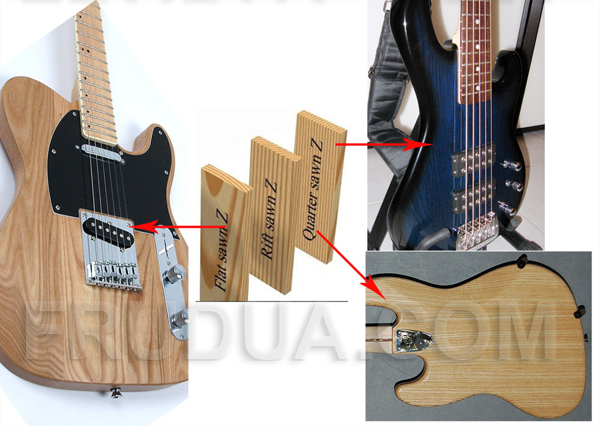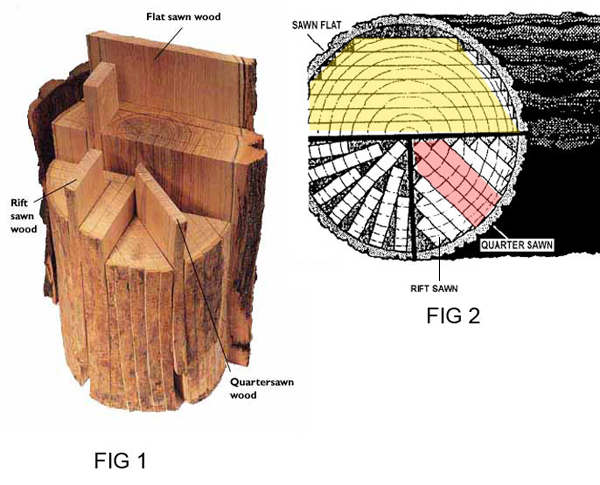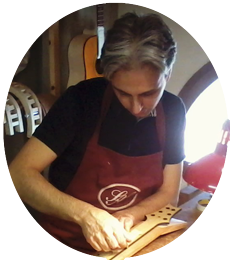
Visit the new website: www.buildyourownguitaronline.com
HOME > Quarter cut vs slab cut in guitar wood
QUARTER CUT VS SLAB CUT IN GUITAR WOOD
The definitions of quarter or radial (quarter sawn), slab sawn, slab cut, flat sawn, and "rift sawn" refer to the various ways in which it is possible to cut up a tree’s trunk.

appears in a jazz bass body. Check for the number of parallel grains in the
body of the quarter sawn body.
In the photo above, you can see how different types of cuts appear on the body of a guitar and an electric bass.
On the right you can see how a quarter cut in ash appears on the body of a bass; observe the amount of parallel veins precisely due to this type of section. On the left you can see how the same "flat sawn" (or "rift sawn") cut in ash appears on a Telecaster's body.
With the same amount of wood, the use of one type of cut or another radically changes the appearance of the instrument.

At the bottom of figure 2 on the right you can see the stacked flat cuts highlighted in yellow. It is easy to see how this type of sectioning of the trunk generates only one real SLAB cut, the first at the top, the only one that will have a horizontal grain.
All the others once divided into blank (on average two per tree), will show a cross grain (rift sawn) and will represent most of the cuts.
Instead the axes that can be obtained in quarter cut are highlighted in pink. As you will notice, the only REALLY fourth one is the central one of the three, the others at the two extremes already show a slightly inclined vein.
The axes of the quarter are three only if the trunk is cut into four segments of the fourth as is done with the fir dedicated to the soundboards of stringed instruments.
If, on the other hand, the trunk is "displaced" vertically, only one board, quarter cut, will be obtained, the central one.


